“So, 30 years ago, Frank Wells asked me…when we were thinking of going from $16.50 to $18.50 [for park tickets]. He said, Jay, is this the ceiling on pricing?”
–Jay Rasulo, Chief Financial Officer, The Walt Disney Company, at the MoffettNathanson Media & Communications Summit, May 13, 2015
DESPITE INCREASING PRICES, DISNEY WORLD IS STILL AFFORDABLE
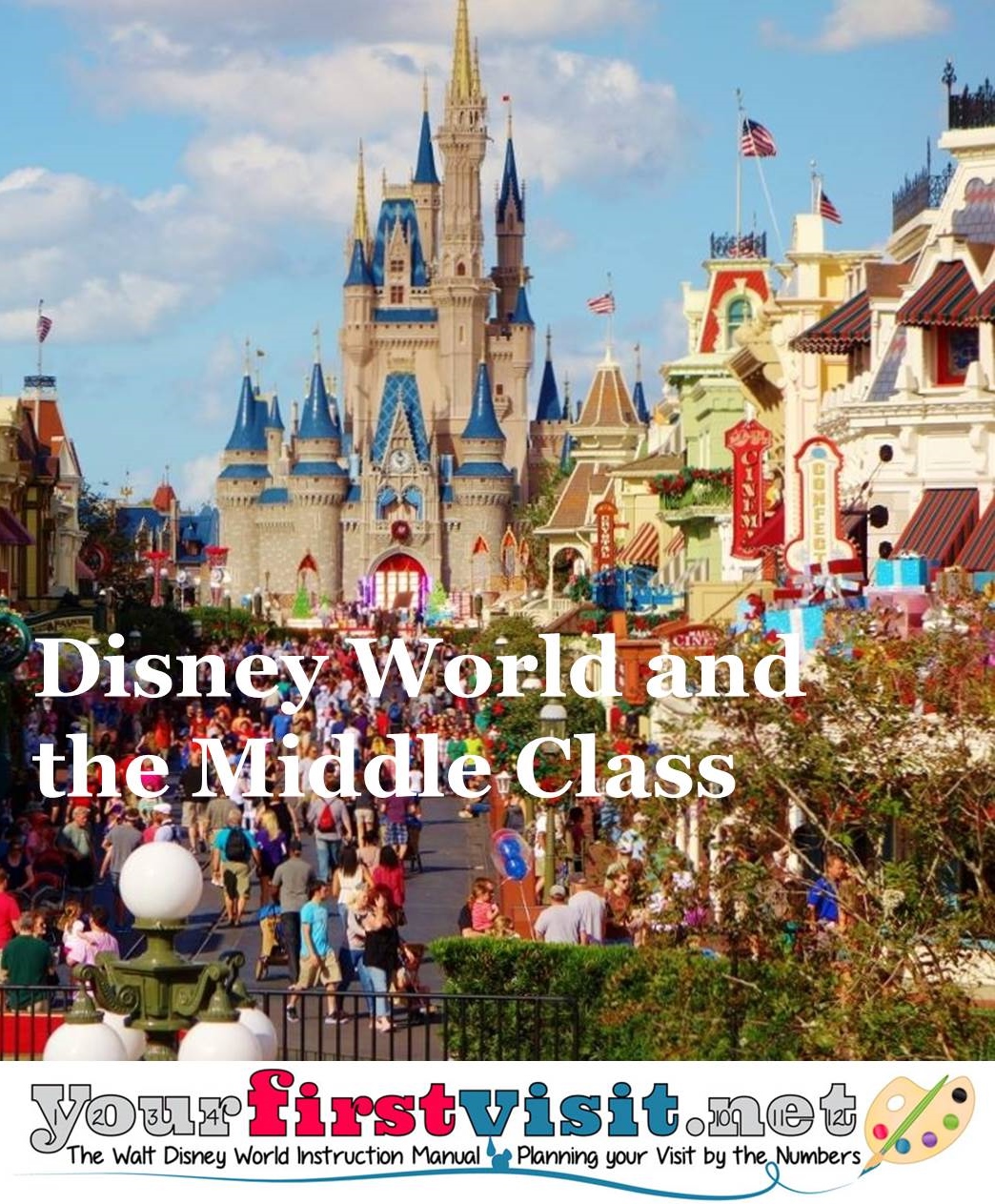 Every now and then Disney World gets caught up in a cultural moment of silly arguments.
Every now and then Disney World gets caught up in a cultural moment of silly arguments.
The most recent flowering has been claims that the middle class can’t afford Disney World at all. These include assertions that
- Disney World has “priced middle class families out”
- Disney World has “left the middle class behind”
- Disney World is “abandoning [the] middle class”
- Disney World has “set their prices at the top ten percent of family incomes”
- Disney World’s “outrageous prices” aimed at “the upper class” … “leave for everyone else … cheap-but-complex ticket deals for certain days, off-site lodging, or … just attending … Six Flags.”
OK, sorry Six Flags, but here’s the reality:
- A Disney World vacation is indeed eye-wateringly expensive (Wanna know how to blanch an almond? Show it Disney World ticket prices…)
- Disney World ticket, hotel and food prices have indeed been going up faster than median household incomes and the CPI for years now. Each time they do so, more middle class families are left out, and other middle class families have to save for longer to be able to afford a visit.
- Even so, a family of four can have a great vacation at Walt Disney World (and stay in a Disney World hotel while doing so) for $2,600 to $3,100, plus travel costs. Plenty of middle class families can’t afford that, but plenty of middle class families can.
The figure of $2,600 to $3,100, plus travel costs is based on
- Five days of park tickets—the minimum for a great visit, with two days at the Magic Kingdom and one day each at Disney World’s other three parks, at $1,350 total for four people. (The way Disney prices tickets, a 6th day in the parks—which I’d recommend—adds a total of $43 to this amount. You pay a shocking amount for the first few days at Disney World—after that, a day in a park is about the cost of a movie.)
- Four or five nights in a standard room at one of Disney’s All-Star Resorts, which during two thirds of arrival dates in 2016 average $100 to $150 a night. Figure this as $500 to $750.
- Five days of food—your mileage will vary, but there are plenty of solid $15 dinners at every hotel and every park at Disney World. A range of $35-50 per person per day sums to another $700 to $1,000.
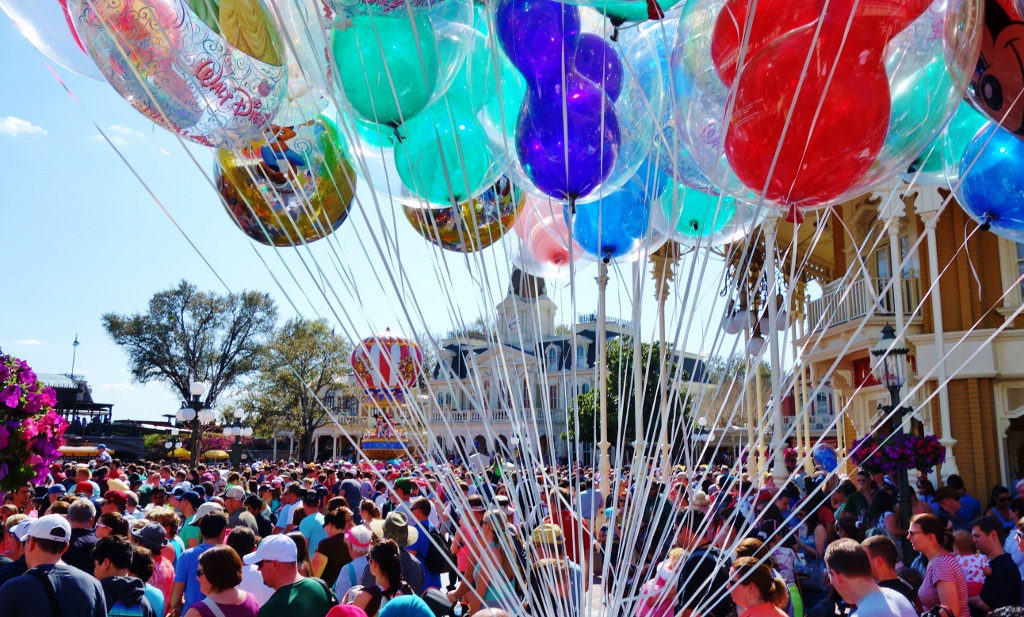
Since there’s no actual definition of the middle class, there’s no actual definition of its income range, either.
Reasonable people might use definitions that include household money income ranges of $20,000 to $105,000, $20,000 to $190,000, or $40,000 to $125,000–this last is the one that resonates with me. (All from this, although I had to interpolate one of the numbers.)
Whatever you define as the range of middle class incomes,
- Most households earning at the bottom of the middle class income distribution are clearly priced out of a Disney World vacation, and have been for decades. As the poet and philosopher George Clinton once sadly reflected, “Broke don’t travel
.”
- Just as clearly, many families higher in the middle class income distribution can afford $2,600 to $3,100, plus travel costs.
- Other families in the middle of the middle class income distribution have to scrimp and save to make a Disney World vacation work, and when prices go up even a little bit, their visits get tenuous. Danielle said this on my Facebook page: “So sad to me because [I] haven’t been in 25 years and finally saved enough to go for a family of 5. And now prices are still going up [so] it may not be possible for a lot of families to afford. 🙁 Everyone should be able to get to Disney at some point in their life.”
But I don’t think a vacation that can cost as little as $2,600 to $3,100, plus travel costs, can reasonably be argued as “pricing middle class families out” or “outrageously priced.”
Now if you read the largely ridiculous articles circulating around, you might be surprised by this. Aren’t the rooms at Disney World $2,000 a night? Isn’t dinner $115 a night just for a steak (and don’t forget taxes and the tip)?
Well, by my count Disney World does indeed own around 150 or so spaces that go for on the order of $2,000 a night or more—around 110 “Grand Villas,” 20 newly-opened “Bungalows” at the Polynesian, and the rest fancy multi-bay suites. (I have argued elsewhere, perhaps tongue-in-cheek, that the new Bungalows are aimed at the important President for Life/ dictator/ oligarch/ drug cartel jefe market segment…)
But it also offers around 9,000 rooms that are typically well under $200 a night, of which about 5,000 rooms are typically $150 or less.
The steak price was a comic error on the part of the writer, who perhaps was more concerned to be tendentious than accurate. But it has been true for years that you can pay an arm and two legs for dinner at Disney World…or you can pay about $15. And there’s a lot more places that serve dinner for $15 than cost an arm and a leg.
That you could spend tens of thousands of dollars on a Disney vacation does not mean that you must. When I shopped for a car last fall, the fact that cars existed that were 15 times as much as I could afford was irrelevant (except insofar as it gave me an excuse to read Dan Neil’s great reviews of them, with lines such as “Like very tight pants, these cars don’t always tell the story owners think they tell“). The cars I could not afford did not matter, and I am happy with the Hyundai that I could afford.
Can you put together a vacation budget of $3,000 over a year, or over several years? Then Disney World welcomes you.
The rest of this post is, I suppose, an analytic appendix to this key point—that many in the middle class can indeed afford Disney World.
TICKET PRICES
Many of the articles have focused on ticket price increases since Disney World opened in 1971. There are two problems with most of the presented analyses—although their overall conclusion that prices are rising faster than inflation or median household money income is dead-on.
One is that they focus on one day tickets, but no one who knows Disney World would recommend just a day there, there’s too much to see. Focusing on one day tickets understates the cost of a Disney World vacation. Five day (or longer) tickets are the appropriate unit of analysis. Five day tickets yield two days in the Magic Kingdom and one day at each of Disney’s three other theme parks, Epcot, the Animal Kingdom, and Disney’s Hollywood Studios–this is the minimum for a great trip.
Second is that they compare apples and oranges. What a ticket covered profoundly changed in the early 1980s, when the parks shifted from two sets of prices—one to get in, and a second to actually get on a ride–to an inclusive admission price that also included access to the rides.
The current ticket format—“Magic Your Way” tickets—emerged in 2005. Below is the trend since 2005 in prices for 5 day Magic Your Way tickets, CPI, and, just because I could find it for a comparison, movie ticket prices.
You can see the major increases in ticket prices over inflation since 2008.
Inflating past ticket prices by the relevant CPI figures yields this inflation-adjusted chart of 5 day ticket prices:
You can see some “restraint” during the recession (there was even more than appears from this list-price chart, as there were some pretty wild discounts early in that period, such as seven hotel nights and seven tickets days for the price of four), and accelerating increases coming out of the recession.
In real terms, ticket prices for a five day trip have increased by about $80 per person since 2005 ($8/year, or $16 a park day)—or about $320 for a trip with a four person family.
This is not a trivial increase, and will require a longer savings period for some families, and indeed will shut out a slice of other families entirely.
But $300 more since 2005 is not enough to make Disney World “unaffordable to the middle class.”
One of the more comic claims made in the recent spate of articles is that Disney has “set their prices at the top ten percent of family incomes” The top ten percent of household incomes begins at about $150,000 a year. If you think a family below the top 10%–e.g. one that makes “just” $145,000 a year–can’t afford another $300 on ticket prices compared to 2005—well, then, to the barricades!
Although it may not seem that way on wildly crowded days like New Year’s Eve and the 4th of July, the parks at Disney World have limited capacity and excess demand.
It rations that demand through price increases, and even so has been seeing record attendance for a while now. This partly because, as Disney CFO Jay Rasulo noted at the May MoffettNathanson Media & Communications Summit, “we price on a value basis and we keep a very, very close check on what the value proposition is for our guests and the feedback they give us about the value of a day in one of our parks.”
ROOMS
Disney World rarely discounts ticket prices, but its hotel room prices both drop and increase multiple times over the year, and see in addition deal after deal over the course of the year (fewer, and with lower effective discounts, since the recession ended).
The best way to see trends in rooms is thus not to focus on list prices but rather on prices real people actually paid for Disney World’s 27,000-plus actual rooms.
With a little math, you can construct this from data in Disney’s SEC filings. This math is the source of the following chart–with past prices inflated to CPI, and four quarter trailing moving averages used to smooth out seasonal prices and thus reveal pure trend:
What you see is realized prices dropping during the recession, and not hitting their pre-recessionary peak until late 2012. Since then they’ve gone up about $25/night in real terms compared to their pre-recessionary peak—or up $100 to $125 for a four or five night stay. (For the curious, un-adjusted charts are here.)
But doesn’t a price of almost $300 a night shut out the middle class? Well it might were that the only price, but it’s in fact the average price of a wide range of options among Disney’s 27,000 rooms.
Disney World has 9,000 rooms in its value resorts where standard room prices are much cheaper than $300 a night—and its last major hotel add, in 2012, was an expansion of these lower-priced rooms.
At the lowest-priced among these, the three All-Star Resorts, you can pay less than $125 a night many nights of the year for a standard room, and less than $150 most nights:
Because Disney manages hotel demand through pricing, the most highly-demanded nights of the year will see higher prices than $150. But if you rank order the average nightly cost of a four night stay in a standard room at, for example, All-Star Sports, you’ll see that a third of 2016 arrival dates are available for $125/night or less, and two thirds at $150 or less:
As I noted last week, many Disney hotel rooms saw major—sometimes astonishing–price increases for 2016.
But the All-Stars showed no increases most seasons—that’s a price cut in real terms. Moderate resort Caribbean Beach saw increases at just CPI—that’s a “no increase” after inflation—and standard rooms at the deluxe resort Wilderness Lodge also saw no price increase most seasons in 2016—again, a price cut in real terms.
Other Disney World hotels saw much higher price increases. But your family doesn’t have to choose them. The middle class can still afford the All-Star Resorts, many easily so, and in fact most times of the year will pay less in 2016, after inflation, than in 2015.
THE VARIABLE PRICING SURVEY
One of the odder things about the recent spate of silly articles was that they came out not based on any particular relevant recent pricing event. Ticket prices had gone up in February, and 2016 room rate increases had not yet been announced.
My guess is that all this was inspired by facts that were true but irrelevant (20 new rooms that go for $2,000 a night among Disney World’s 27,000 other rooms that go for less—usually MUCH less), facts that were untrue and irrelevant—the putative $115 steak—and a survey.
Yes, a survey. Disney recently released multiple surveys to test reaction to variable pricing of its park tickets—charging more for more popular dates and less than that for less popular dates. (The line at the beginning of this post that the middle class has been relegated to “cheap-but-complex ticket deals for certain days” likely came from a confusion between these survey questions and reality.)
All these surveys showed current ticket prices for less popular dates, and higher prices for more popular ones—that is, on average a price increase. Some of these surveys also showed additional new ways to price multi-day tickets, and in the case of one of these, you could infer the doubling of the price of some multi-day tickets.
Well, folks, you heard it here first: Disney isn’t suddenly doubling ticket prices this year, or anytime soon.
Moreover, if the surveys didn’t all show either current or higher prices, then the Disney fan community—sometimes characterized more by volubility than good judgment—would have been agog with the claim “Disney is cutting some ticket prices!” That’s not gonna happen, either.
Third, Disney World does all kinds of surveys, all the time. Most turn into nothing. From my co-author Josh:
Fourth, as I’ve noted before, it would actually be a great thing—even for the middle class—if Disney reduced attendance the most crowded days of the year by shifting to variable prices, and then using increased prices to better fit capacity to demand those dates.
On New Year’s Eve at Epcot last year some people waited five hours for some rides. Five hours.
Those five hour waits fell on the just and unjust alike, so peasants, the proletariat, the petite bourgeoisie, and the nobility can all agree with fervor that spending five hours waiting for one ride is simply not to be borne. Viva la revolucion!
Follow yourfirstvisit.net on Facebook or Google+ or Twitter or Pinterest!!
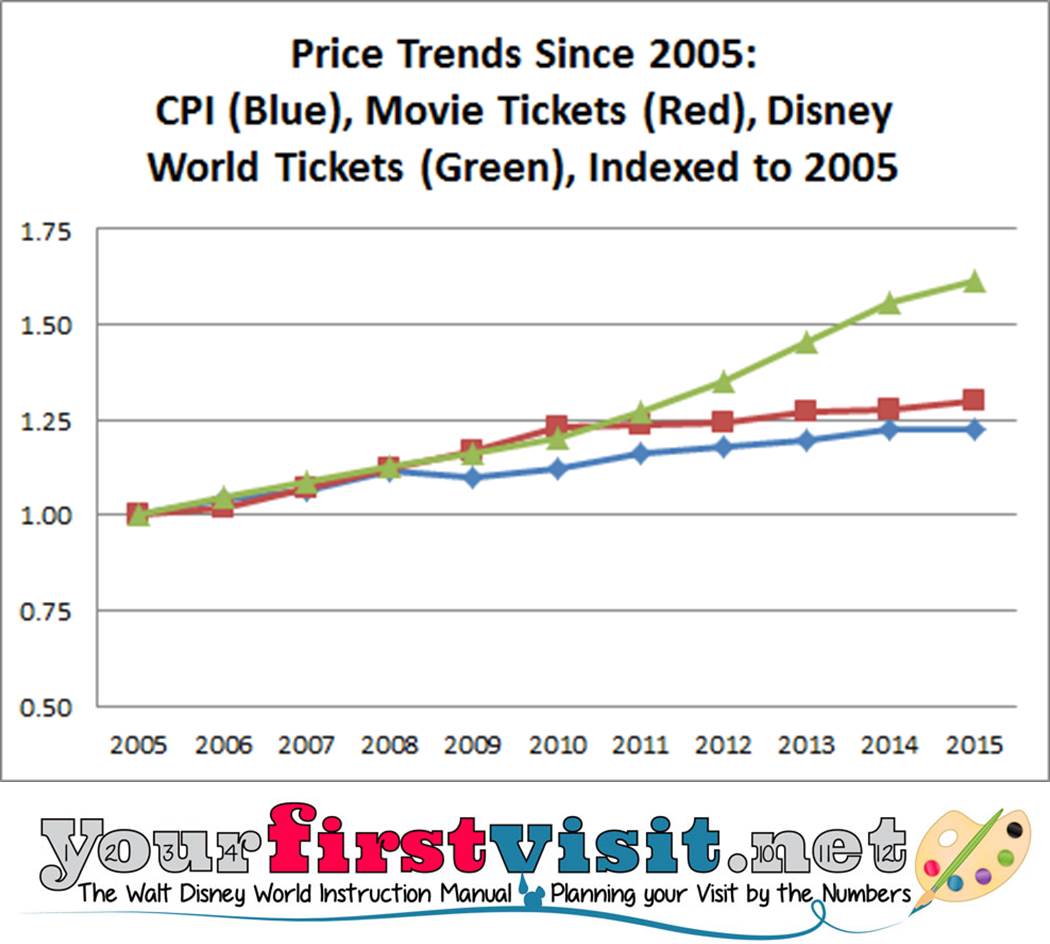
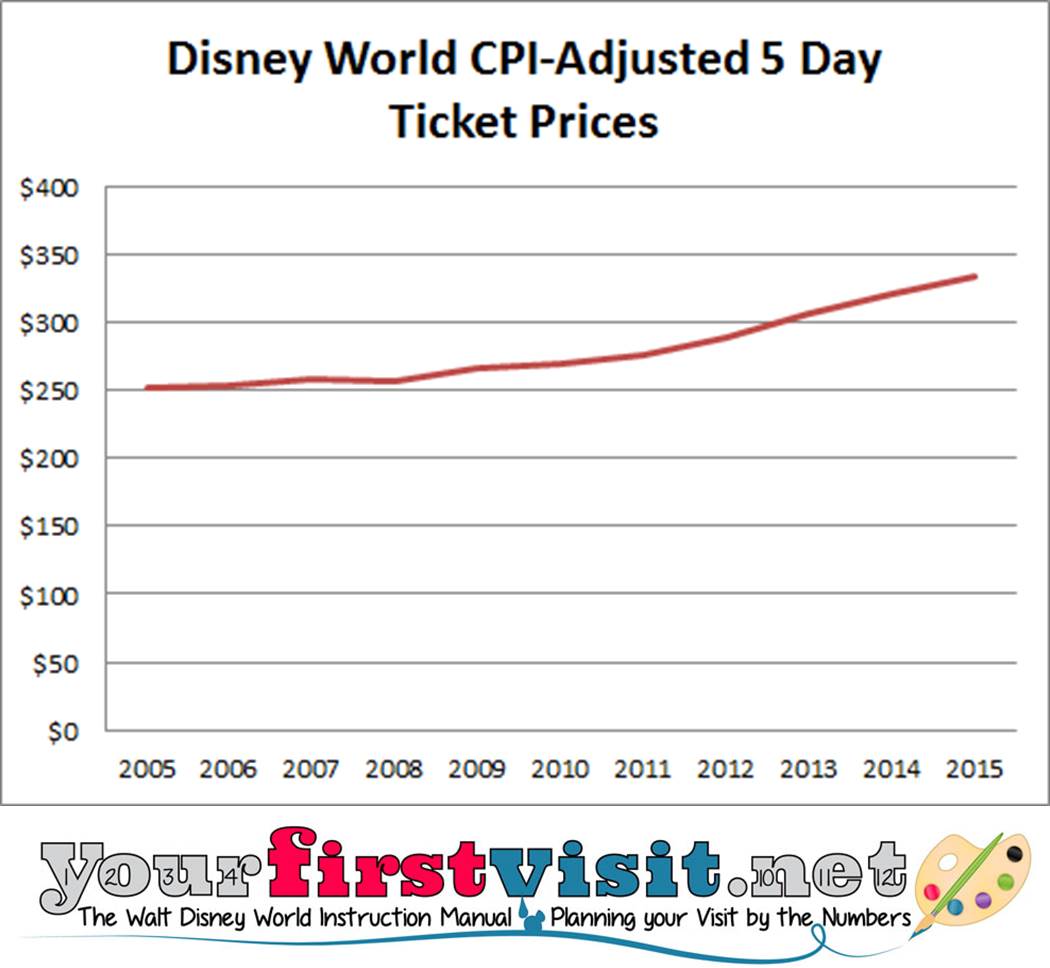
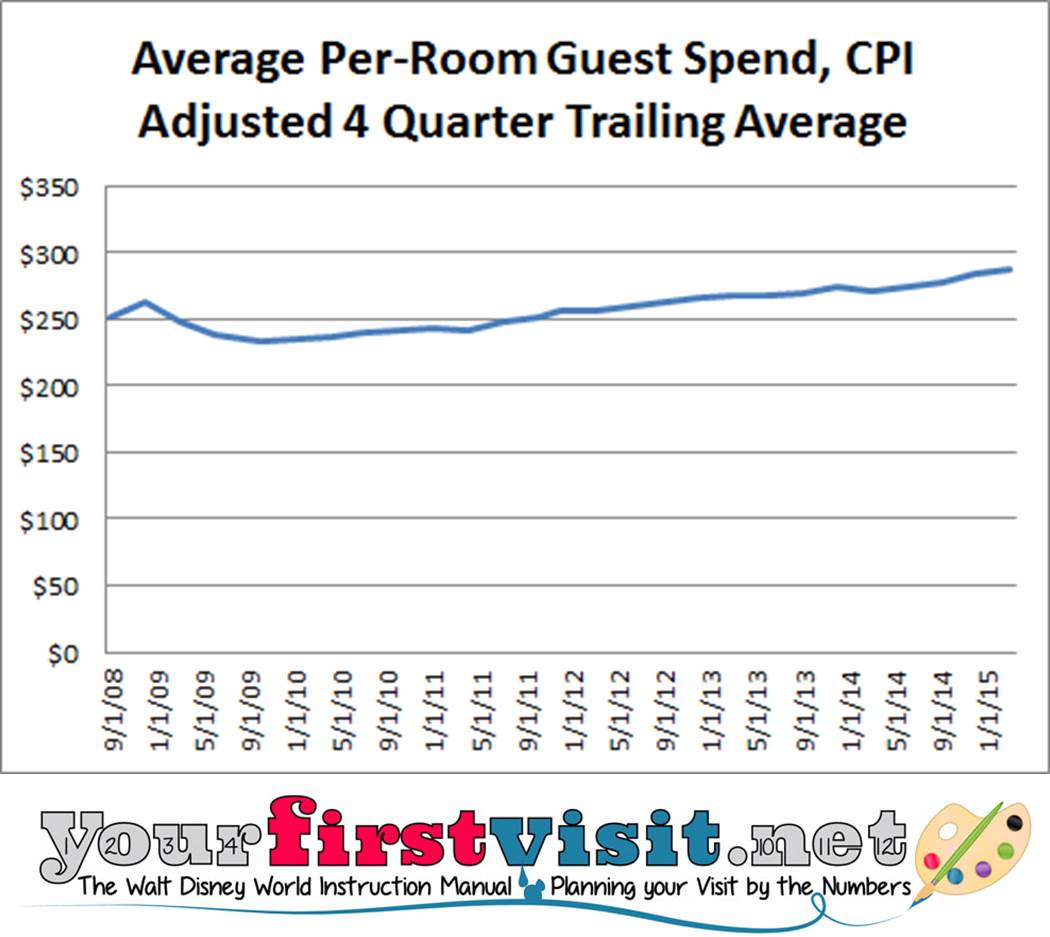
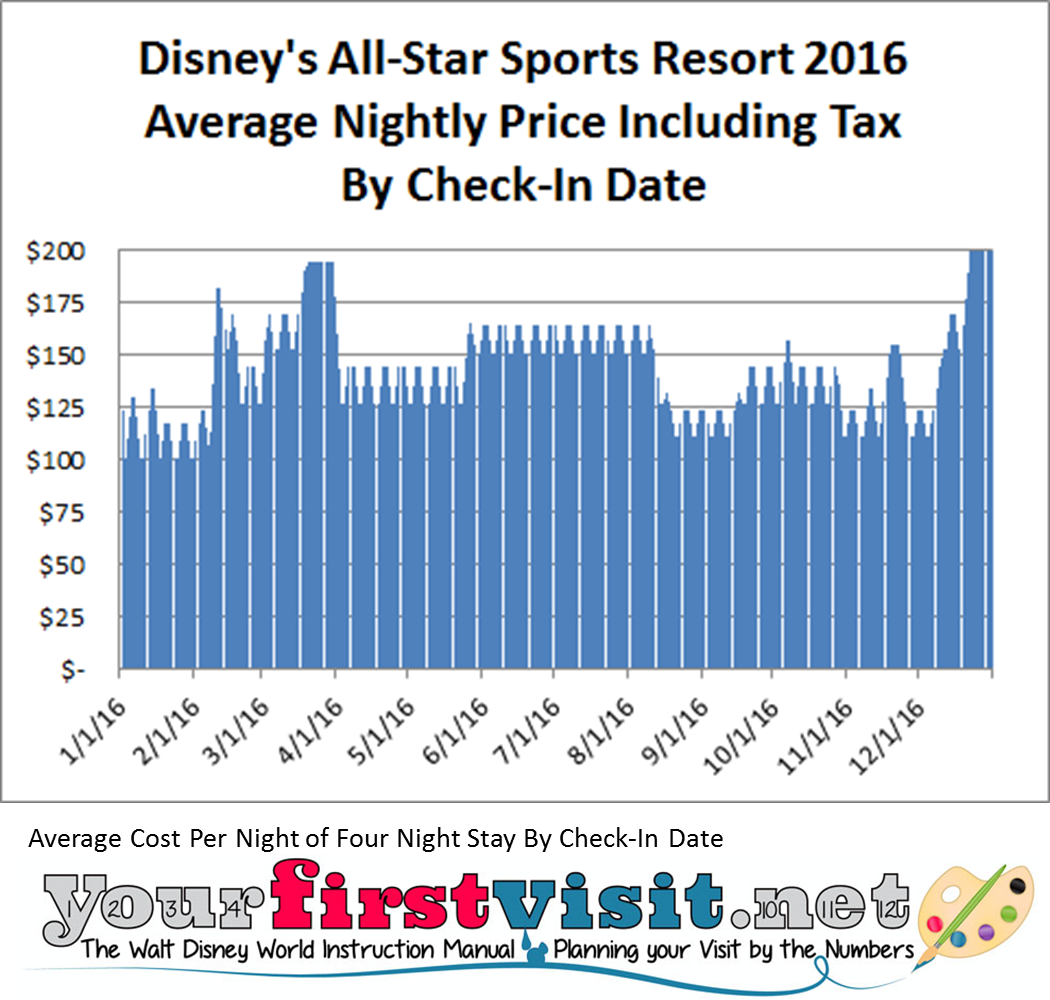
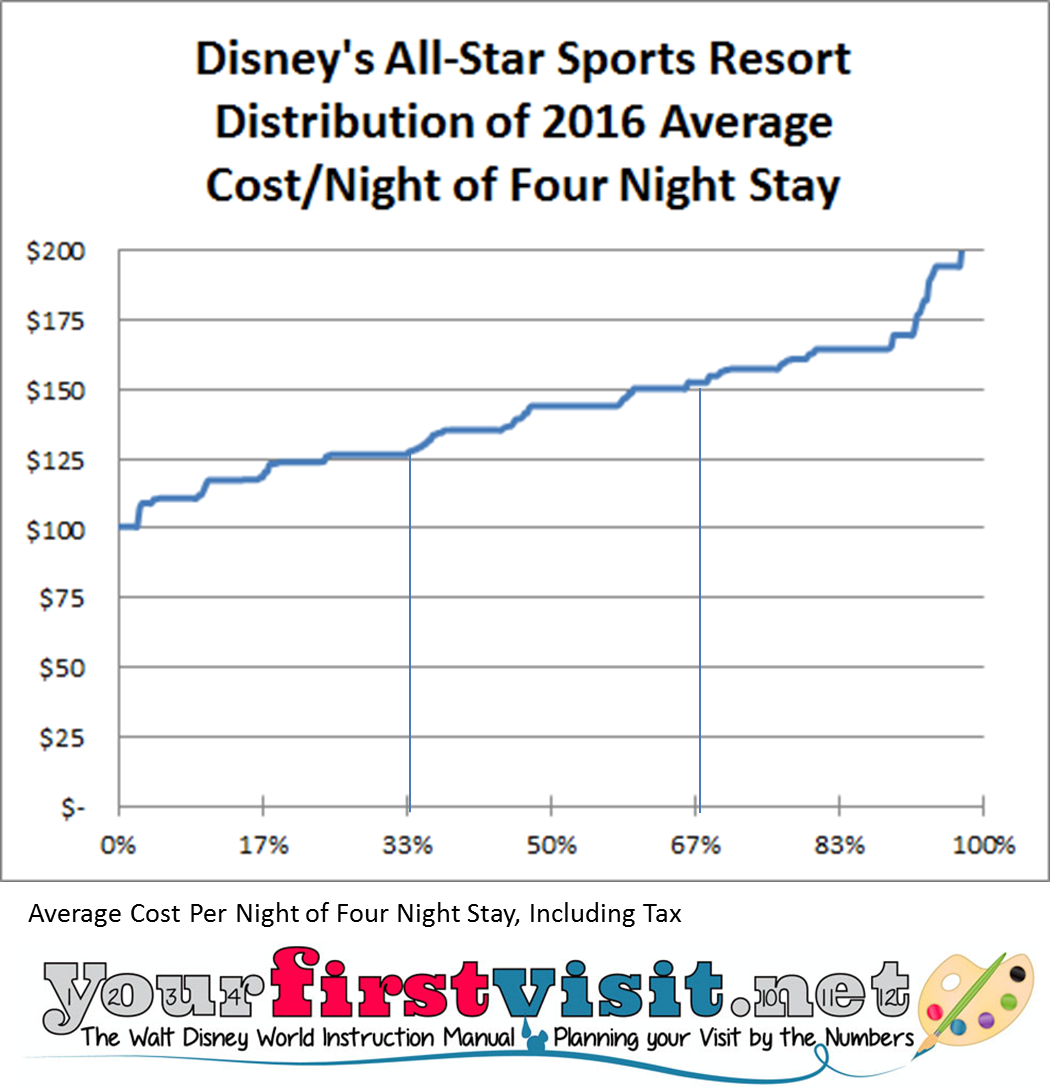

Leave a Reply
13 Comments on "Hey, Middle Class: You Really ARE Welcome at Disney World"
Dave you did a great job researching this article.
I have a problem with the attitude that “everyone should be able to go to Disney in their lifetime.”
People are no more entitled to a Disney vacation than they are to one in Hawaii, Europe, or any vacation at all.
Fantastic article! We have gone to WDW annually for the last 8 years (this year will be #9), and we have been able to do so by making it a priority when it comes to how we spend our money. Anything can be achieved with a solid plan in place. Set goals and reach them by staying focused and working hard. Might it take a little longer to save with each increase? Absolutely! The key is to not get sidetracked from the goal. It can be done!